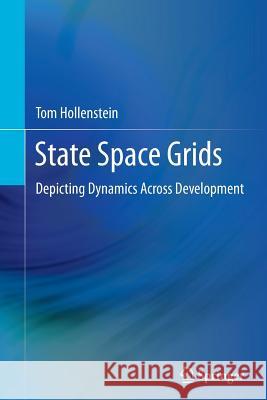State Space Grids: Depicting Dynamics Across Development » książka
State Space Grids: Depicting Dynamics Across Development
ISBN-13: 9781489991553 / Angielski / Miękka / 2014 / 130 str.
State Space Grids: Depicting Dynamics Across Development
ISBN-13: 9781489991553 / Angielski / Miękka / 2014 / 130 str.
(netto: 422,69 VAT: 5%)
Najniższa cena z 30 dni: 424,07
ok. 22 dni roboczych
Bez gwarancji dostawy przed świętami
Darmowa dostawa!
During the past 20 years, behavioral and social scientists - following advances in physics and mathematics - have shown an increasing interest in complex, adaptive, self-organizing, dynamic systems. The appeal of this perspective is fueled by the fact that there are a handful of properties that are common to all dynamic systems that can be used to explain the spontaneous emergence of novel forms, the mechanisms of continuity and change, and the dynamics of a large number of interacting factors. From animal population dynamics to human neural processes, there is growing evidence that human individual and social interactions may be understood as a dynamic system. In the field of psychology, there was a flurry of books during the early 1990s that explored the dynamic human system. These titles, and those that have been published since, fall into two general categories: those that integrate dynamic systems ideas into psychological theories and those that provide methods of modeling dynamic human systems (see list of competitive titles below). Despite the enrichment that dynamic systems principles have afforded psychological theories, the methods provided to test these theoretical assumptions have not been readily adopted. The reason is that, unlike the physical scientists, social scientists are not as familiar with the mathematical formulations (i.e., differential and difference equations) required for these methods, nor are their data particularly amenable to such manipulations or models. Furthermore, the psychological relevance of some of the parameters extracted from these methods (i.e., Lyupanov exponents, chaotic attractors) is very difficult to interpret. What is needed is a methodological middle road to bridge theory and analysis. The proposed book on the state space grid method is perfectly poised to provide that bridge. State space grids were first developed by Marc Lewis and colleagues (Lewis, Lamey, and Douglas, 1999) to depict sequences of infant attention and distress. This technique has since been applied to the study of parent-child interactions (Granic & Lamey, 2002; Granic, Hollenstein, Dishion, & Patterson, 2003; Hollenstein, Granic, Stoolmiller, & Snyder, 2005; Hollenstein & Lewis, under review; Lewis, Zimmerman, Hollenstein, & Lamey, 2004), and peer interactions (Dishion, Nelson, Bullock, & Winter, 2005; Martin, Fabes, Hanish, & Hollenstein, 2005). At this time, there are projects in progress that extend this work into the study of marital interactions, young adult group drinking patterns, eye gaze and eye contact in response to questioning, diary studies, and peer pressure dynamics.











